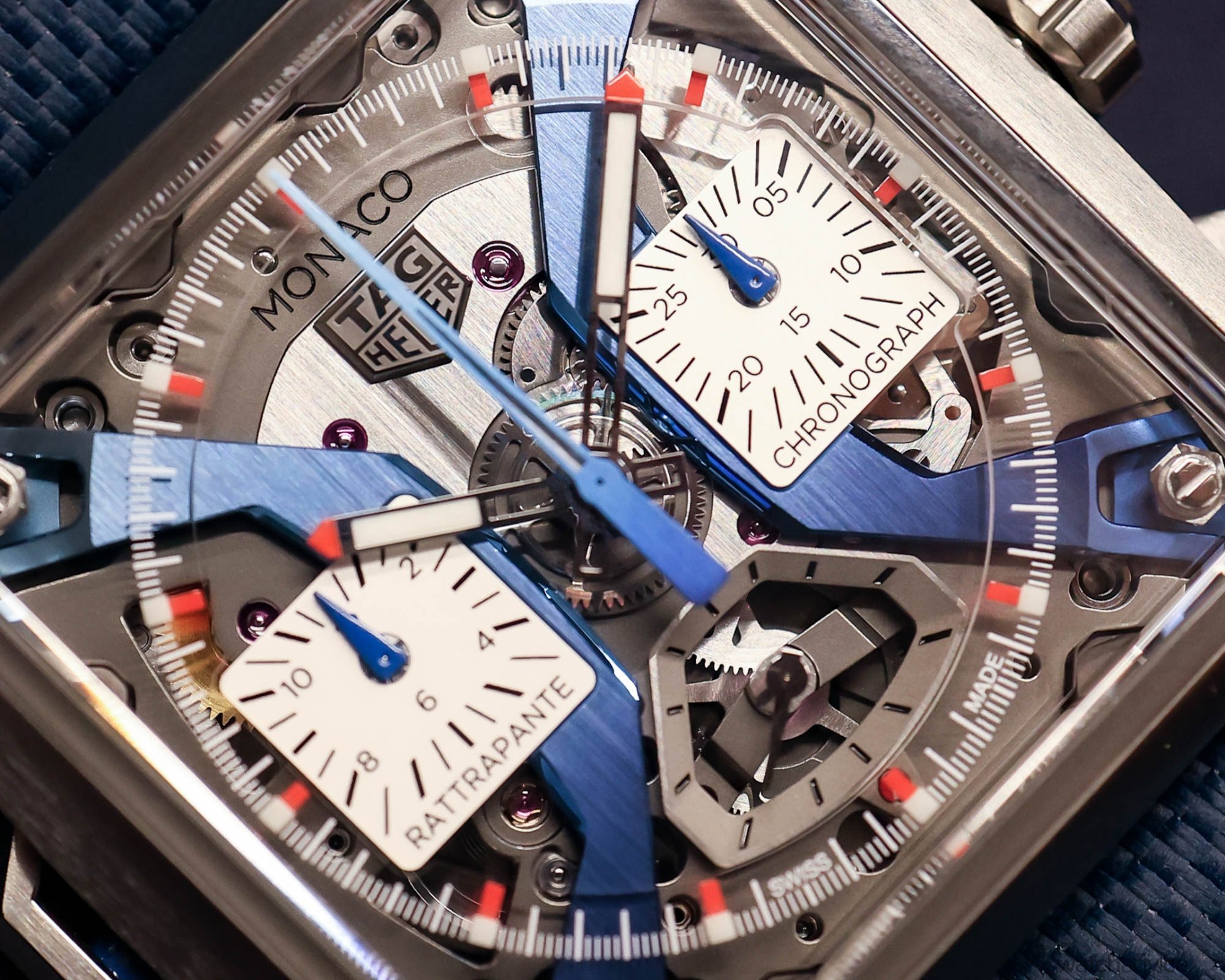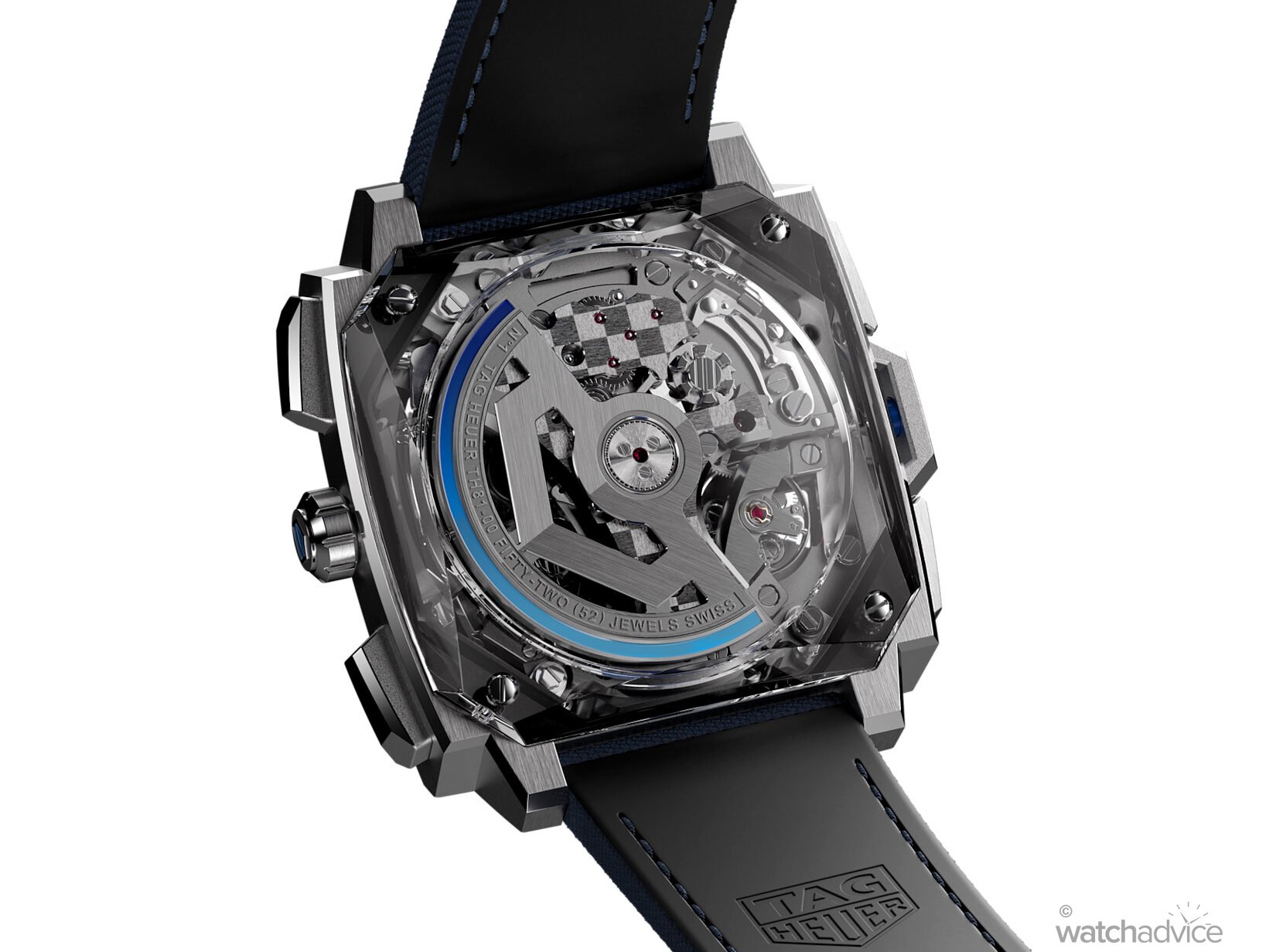TAG Heuer has had a massive year. So as the year draws to a close, we look back at 2024’s highlights, and with this, get a glimpse inside the future of the brand with none other than TAG Heuer’s Movements Director, the award-winning movement designer, Carole Forestier-Kasapi.
It’s been a big year for TAG Heuer. The LVMH-owned brand has been making strides over the past couple of years with its watches, both design-wise and with their in-house movements. They are slowly shedding their old skin and re-inventing themselves for the modern watch buyer, or should I say refining themselves. It’s no secret that TAG Heuer is a mass-market brand, with effectively a watch for everyone in their model lineup. This can be both a good and bad thing brand-wise. On the one hand, you can service a large segment of the market, which means you can capture a greater share and build your brand. On the other hand, you can’t then focus on a selected segment and double down on this. You also run the risk of the watch community thumbing their nose at you based on the above, be it right or wrong. And this is where TAG Heuer was perhaps 5 or so years ago.
Today, the tide is turning, mostly because of the renewed focus on refining the brand and the products that they are putting to market. Yes, they still have watches for people who just want a nice watch and unlike us, are not all that fussed about movements, brand heritage and design DNA, and rightfully so – there are a lot more people like that who buy watches than there are us watch nerds. However, TAG Heuer has put a lot more focus into their hero products and icons to start the journey of elevating them to appeal not only to the wider market but also to those who fall into the enthusiast bucket. The 2023 launch of the Glassbox Carrera was the first major shift, and in 2024, TAG Heuer continued with this direction, and in a way, doubled down on this.
2024 started with LVMH Watch Week and for TAG Heuer, a new Carrera Chronograph Tourbillon along with the revival of the Carrera Dato both in a stunning teal green. With this, we knew that this year would be another year for the Carrera.
We saw TAG Heuer ambassador, and all round nice guy, Patrick Dempsey help then CEO, Julien Tornare re-open the renovated flagship boutique in Sydney, and help host a gala star studded evening at Machine Hall in Sydney, which had around 400 people there, including a range of Australian celebrities and like singer, G-Flip, celebrity chef, Colin Fassnidge, who I sat next to at dinner – always fun at a dinner with a chef next to you to talk about the food and of course, watches!

Then it was the major watch event of the year, Watches & Wonders 2024 where TAG Heuer introduced their latest creation, the Monaco Rattrapante – a split-second chronograph that was based on the previous year’s Only Watch entry. Done in a grade 5 titanium case, one with a DLC coating, a new in-house split-second chronograph movement in the TH81-00 beating at 5Hz and priced at A$200,000, it was TAG Heuer signalling to the industry that they too can play the high-horology game too!
Also on show was the new Panda Glassbox Carrera, which Sam reviewed not that long ago, an ode to one of the original Carreras Jack Heuer produced when he was in charge of the brand, and a new rose gold Skipper which looked great in the metal.
In May, TAG Heuer teamed up with US Clothing retailer, Kith, and released a collection of vintage Formula 1 pieces based on the original 1986 version, and depending on which model you were after, was available via either Kith stores, TAG Heuer Boutiques or both. It was a fun collection and collaboration, with the founder of Kith, Ronnie Fieg holding a special place in his heart for the brand and Formula 1 watches.
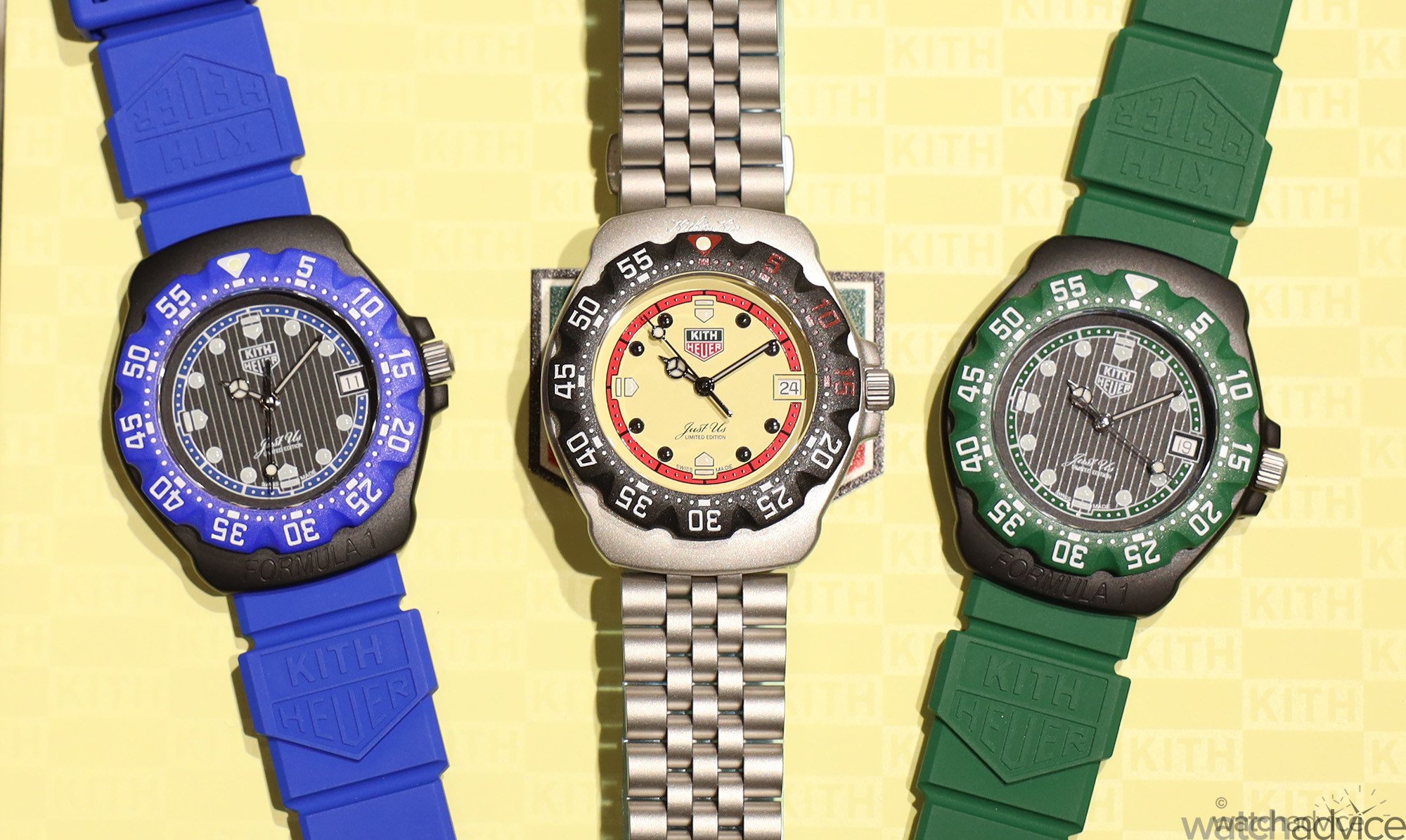
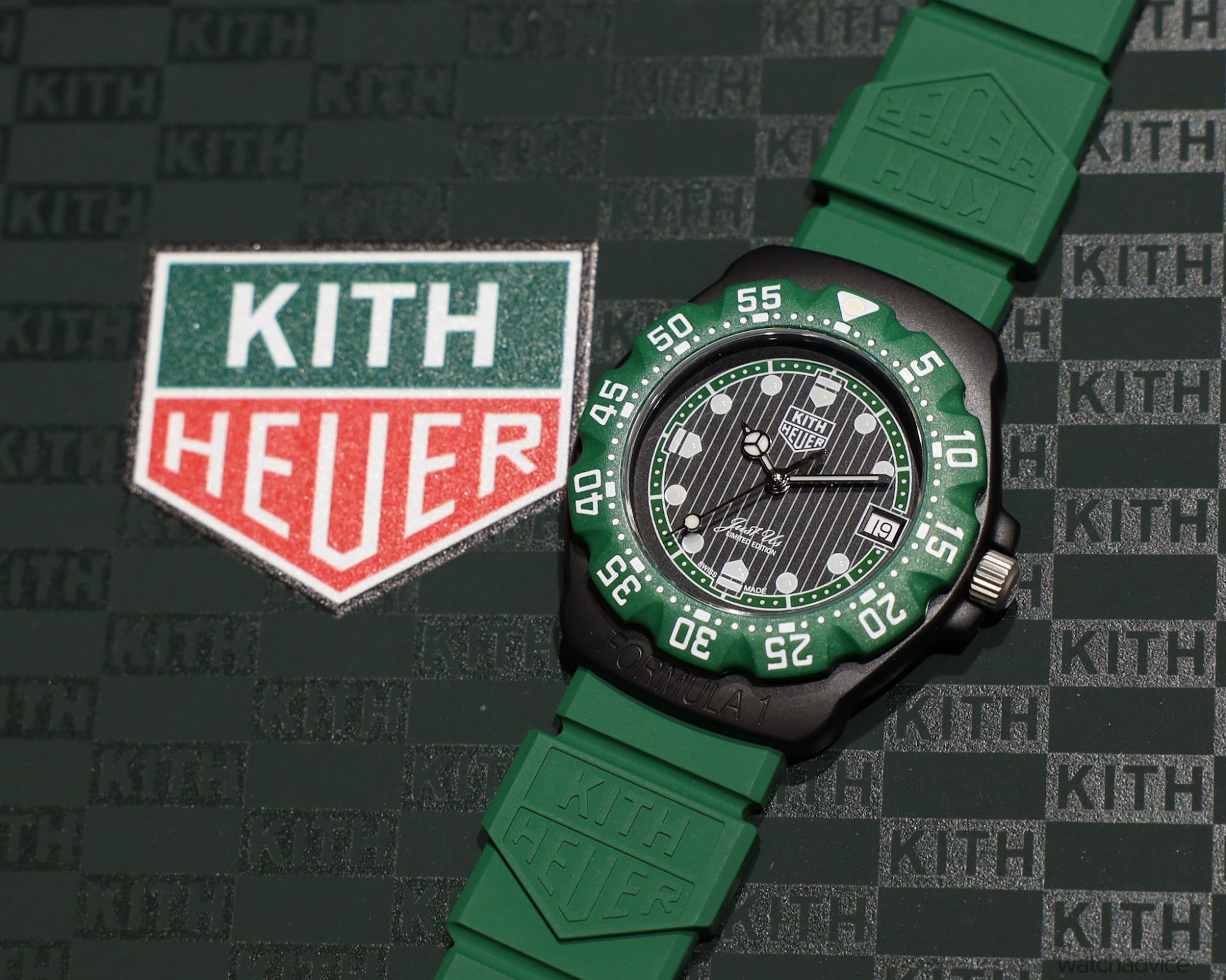

The notable release post Watches & Wonders we feel was that of the new look TAG Heuer Aquaracer. Rather than doing a colour change, or a few minor aesthetic changes, TAG Heuer started almost from scratch with these. Still keeping the design DNA of the Aquaracer 300, TAG Heuer re-designed the case to be smaller and more ergonomic, designed a 3D wave pattern on the dial which looked amazing, re-vamped the bracelet and connections with the lugs to fit better and inside, a COSC movement with 80 hours of power. And for the time-only pieces, a touch under A$5,000. What wasn’t to like? I went hands on with the GMT version in August, and it made me think long and hard about my Tudor Black Bay!
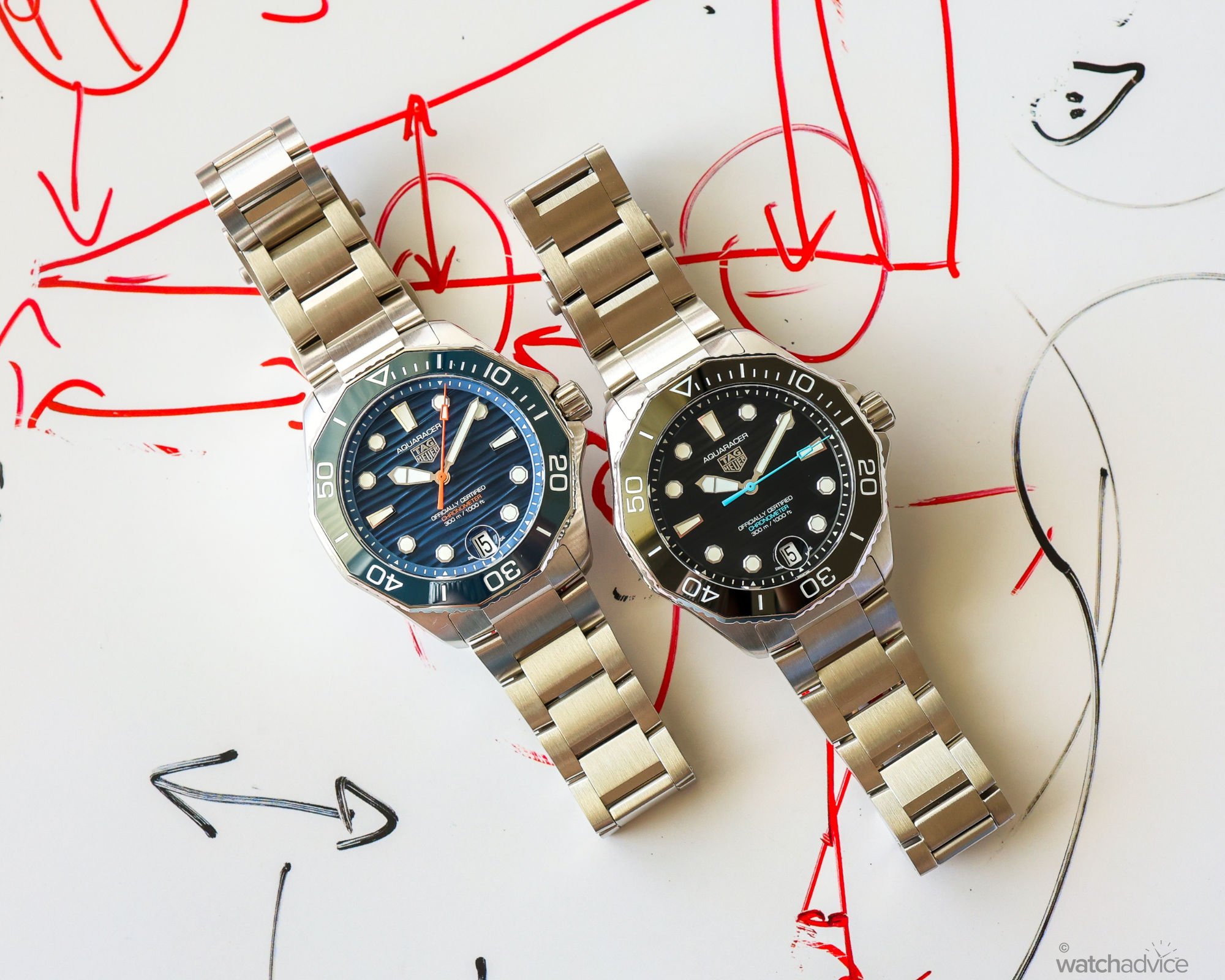
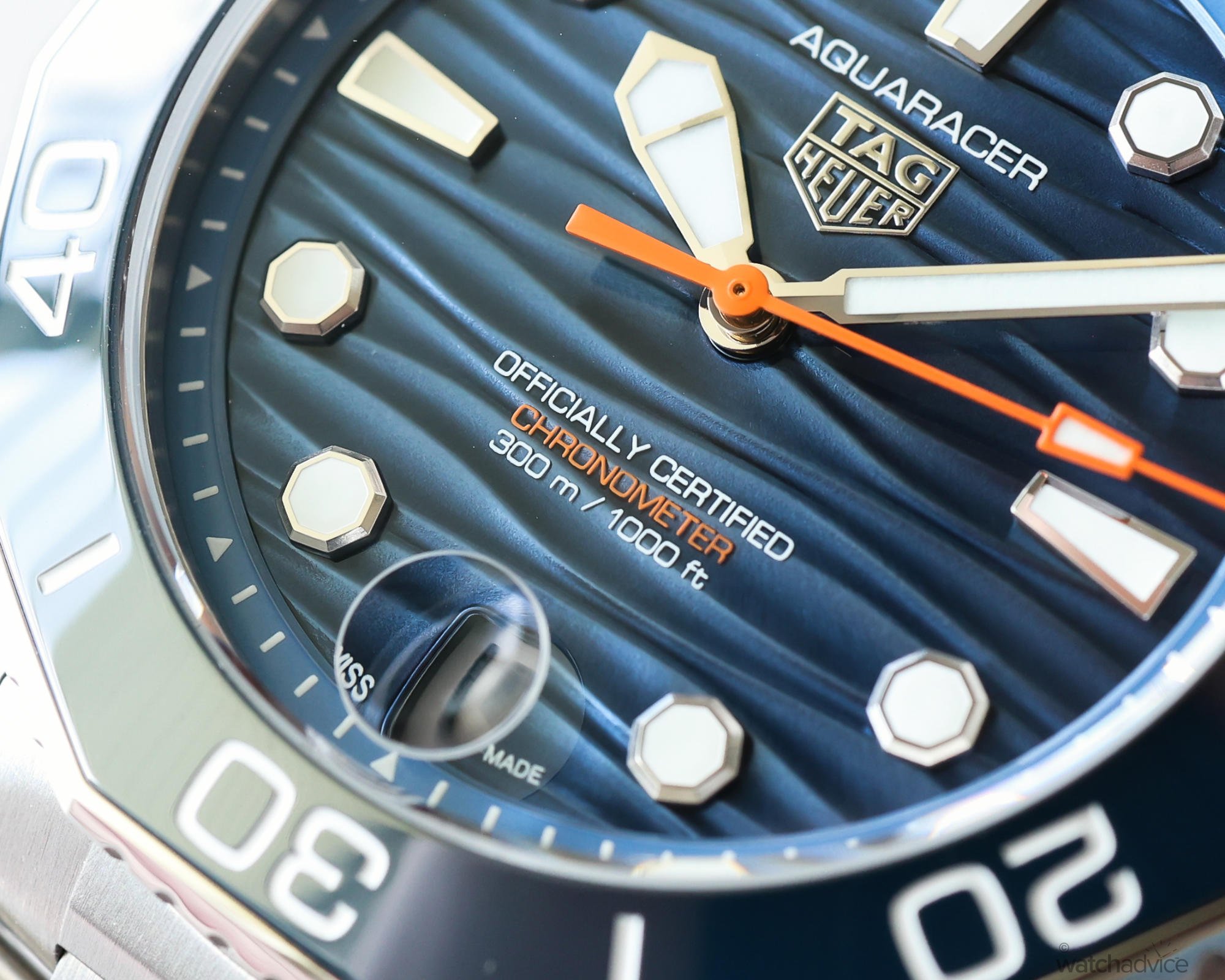
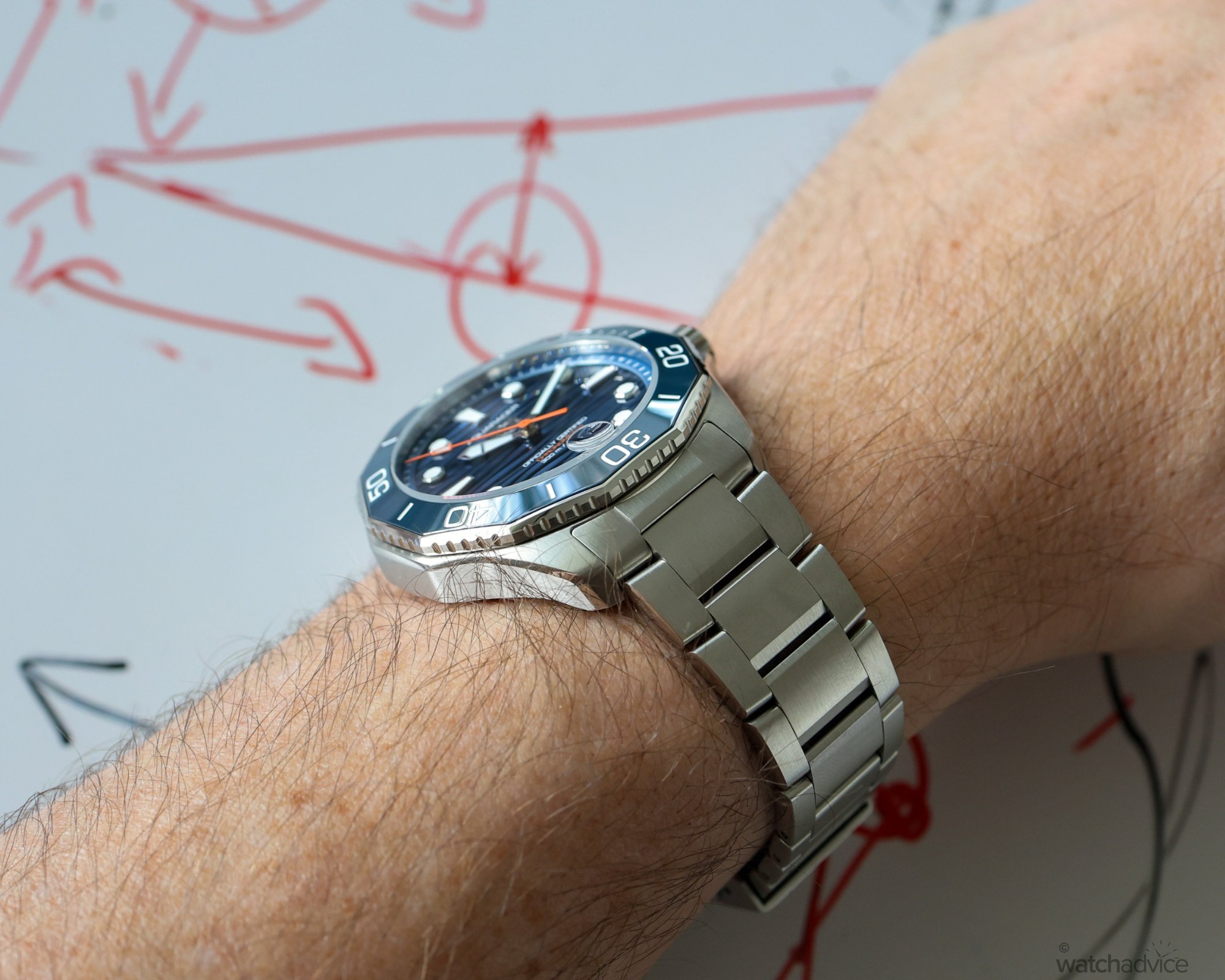
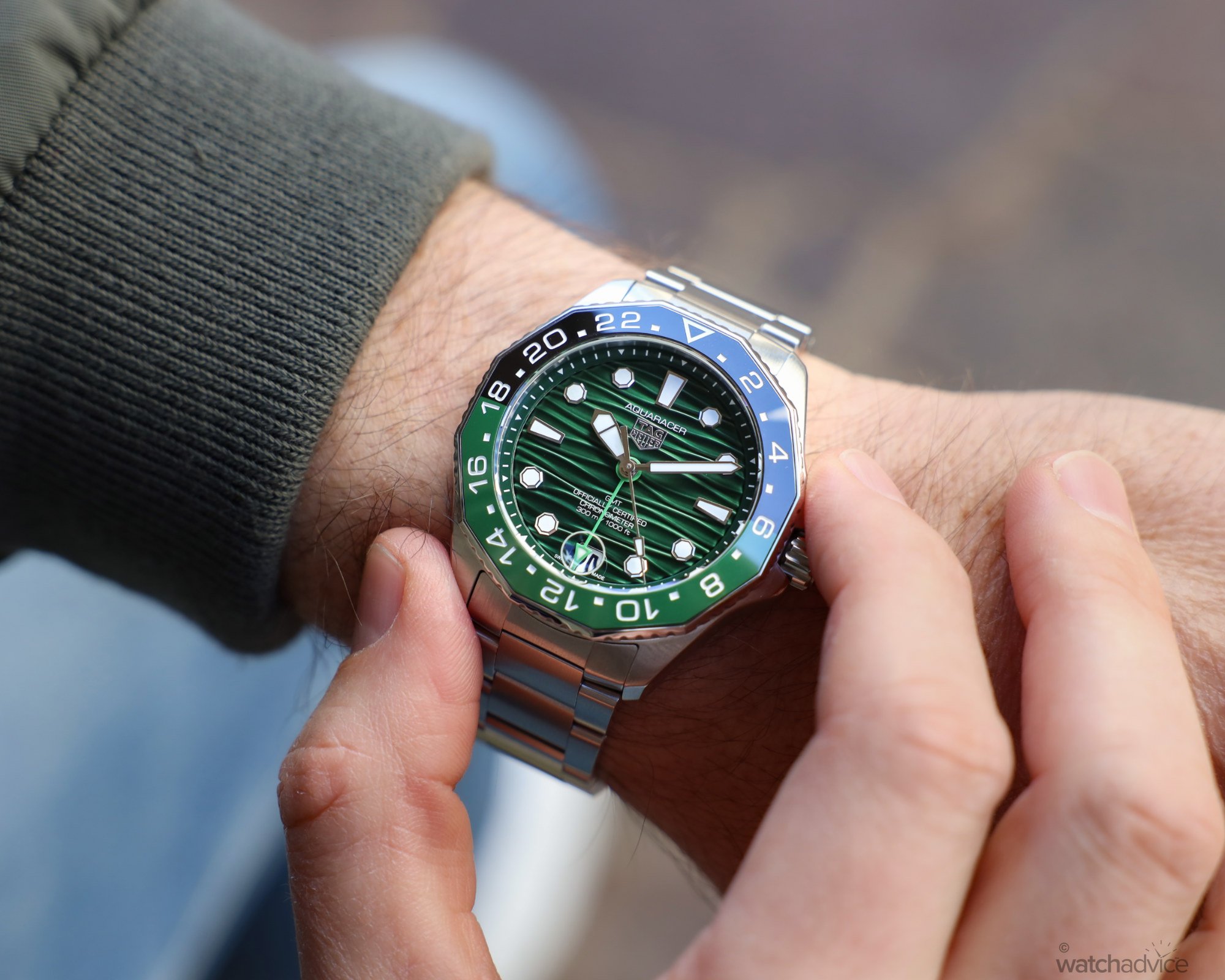
Outside of these major releases, we saw more Carrera’s enter the collection, with new Carrera Extreme Sport models for the motorsport enthusiasts among us. With a standard model range including the Rose Gold version I went hands on with, to the limited edition Porsche 963, to the latest special edition Ayrton Senna Tourbillon. There were also collaborations with Hodinkee in the form of the Carrera Chronograph x Hodinkee Seafarer, a model that has historical roots going back to the 50s and 60s when Heuer was a supplier to Abercombie & Fitch. The Carrera Chronograph Tourbillon x Porsche Panamericana was also released, a nod to both Porsche’s motoring history and the race that gave the Carrera its name – both the car and the watch!
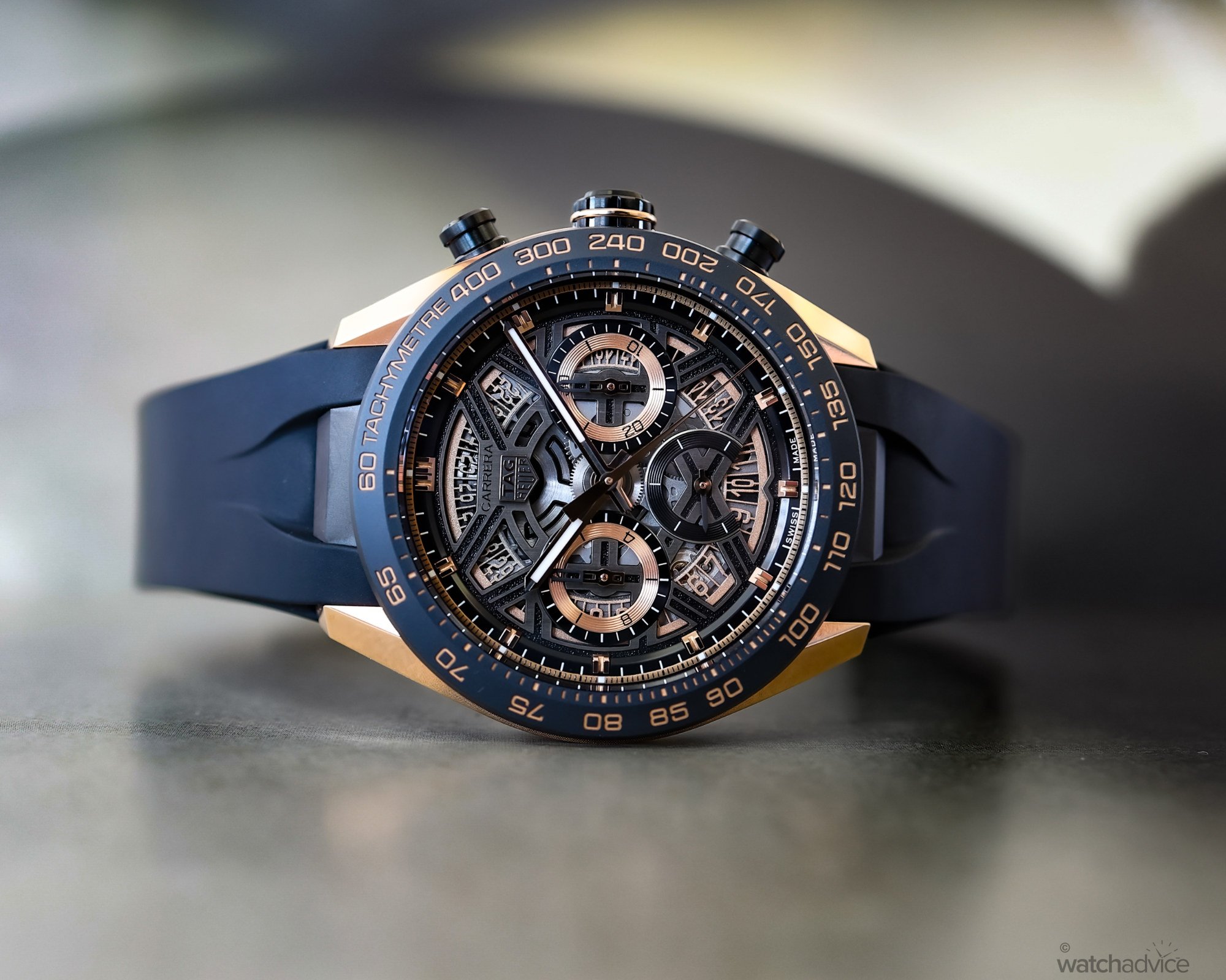

The TAG Heuer Monaco also had a few new models hit the streets. The most recent was the Monaco Skeleton in pink, brought out just prior to the Las Vegas Formula 1 Grand Prix and on the wrist looked hot…pink that is! I road-tested this one out as well, and at first, I wasn’t sure, but it grew on me over the week and became one of those watches that was easy to slip on and off each day. The Monaco Chronograph in dark blue was also a great release back in May, and to date, probably one of my favourite Monaco’s released from a daily wearer perspective.
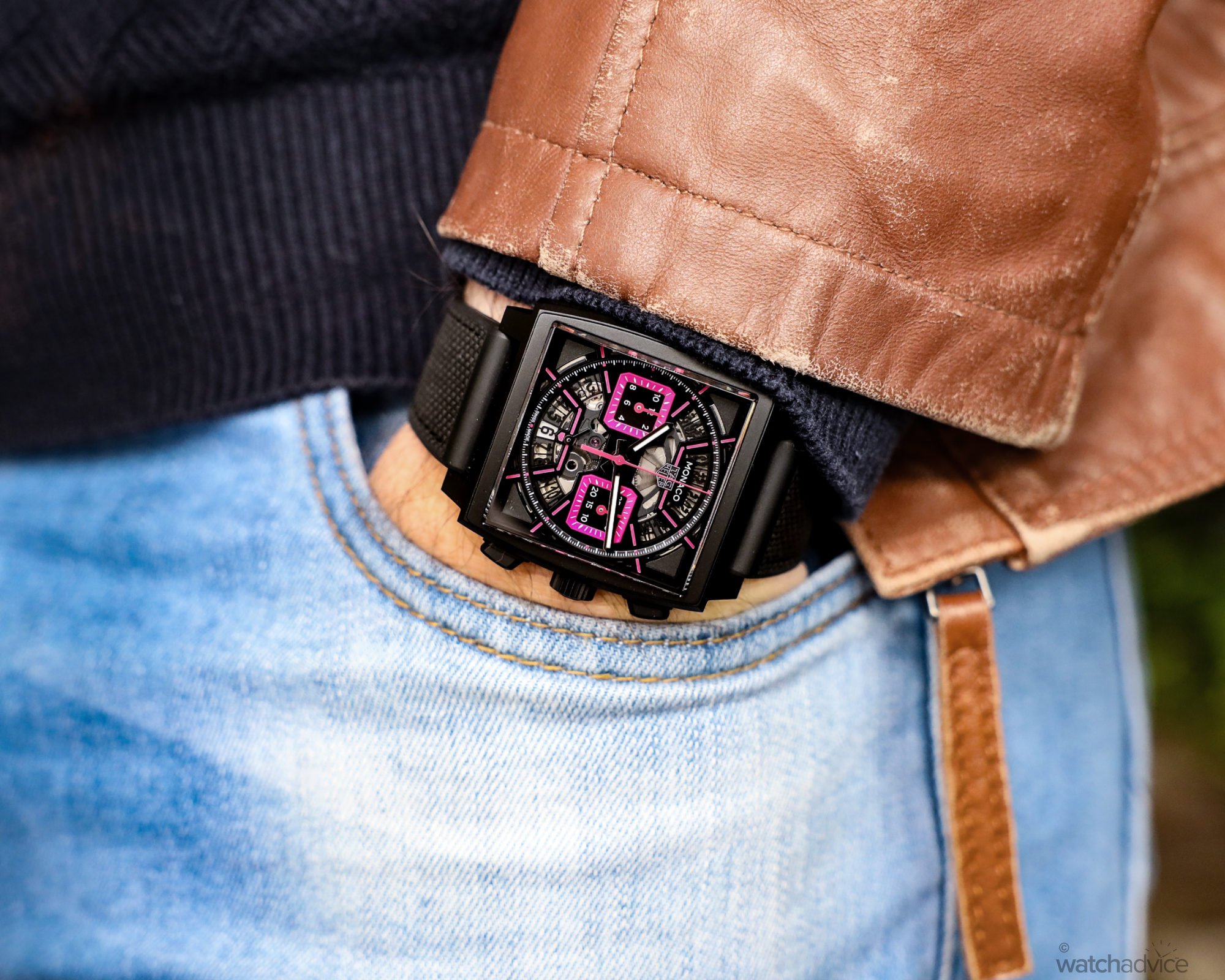

It was also announced that LVMH inked a deal with Formula 1, something that had been widely talked about for many months, ending speculation over Rolex wrapping up their major partnership with the sport. As a part of this 10-year deal, TAG Heuer will be the new timing partner for Formula 1 next year, which starts in March here in Australia at Albert Park. TAG Heuer has had a long association with F1, and while we will be sad to see Rolex go, it will be nice to see the green and red shield when we see the start and lights out next year.
Along with all the watch releases, it was announced that Julien Tornare, TAG Heuer’s CEO would take up a new role as the new CEO of sister brand, Hublot. With only 6 months or so at TAG Heuer, it was a little unexpected, but given Julien’s background, made a lot of sense to replace Ricardo Guadalupe. This made way for Bvglari ‘s head of watches, Antoine Pin, who started his career with TAG Heuer via way of DFS. Welcome Antoine!

So it’s safe to say it’s been a massive year for TAG Heuer, and lots of changes across the board. But with change comes opportunity, and opportunity brings change, it’s a cycle in business. But change for TAG Heuer has been a good thing, as mentioned at the start of the article, it’s been needed and over the last few years implemented.
Among those at the head of TAG Heuer driving this change, outside of the new CEO Antoine Pin and people like Nicholas Biebuyck, TAG Heuer’s Heritage Director, is TAG Heuer’s Movement Director – Carole Forestier-Kasapi. The award-winning movement designer, who some consider one of the leading watchmakers in the industry has been with TAG Heuer since 2020. After a long stint with the Richemont group, heading up the movement department for brands like Cartier, Piaget and Van Cleef & Arpels, Carole jumped the fence to LVMH, and to one of the most well-known watch brands in the world at that. Since then, we’ve seen TAG Heuer put more of a focus on their movements, creating new Calibres like the TH20 for their chronographs, and this year, partnering with AMT to develop the Calibre TH31, a COSC-certified automatic movement with an 80-hour power-reserve for the new look Aquaracer I spoke about above. And It’s paying off.
Earlier this year, we caught up with Carole in Geneva to talk to her about her role, and the the direction TAG Heuer is taking with their movements, plus her involvement in the new Monaco Split Second Chronograph (Rattrapante). It was an interesting conversation, and candid, as Carole is not one to mince words and given English is a second language, she’s to the point. But she loves what she does, does so with a sense of humility and grace, and also with a sense of humour, which is probably attributed to her upbringing as she was born into a watchmaking family, with her father, mother and brother all being watchmakers. So when someone says that it runs in the family, or it’s in their blood, you could say that for Carole, watchmaking is certainly in her blood, and you could also suggest that this was a role she was born for!
“I spent so many times after school in the family workshops. I’m somebody who’s very curious, so you know how it works and you start to disassemble clock mechanisms just to understand how it works. And you start to open one book, two books to understand all this. That was how I grew up!”
This upbringing was the start of what would be an illustrious career in watches, and with watchmaking in the blood, Carole has gone on to win some of the watch industry’s most converted prizes. She took home the Breguet Prize in 1997, then took out the prize for Best Watchmaker at the GPHG in 2012 and more recently, the prestigious Prix Gaïa in the Craftsmanship – Creation category.
All this expertise and experience has led her to elevate TAG Heuer’s movements, and what better way to showcase what TAG Heuer is capable of, and a glimpse into the future than the Monaco Split Second Chronograph, originally designed for Only Watch, now something that has been put into production by the brand.
“I consider always that I was in charge of writing a page of the book at the Maison, and for that, I need to know the beginning of the book very well. Otherwise, it doesn’t match. So this is it was my first job I would say when I joined TAG Heuer four years ago. I spent a lot of time [going] through the museums, through the archives, speaking with our Heritage Director, Nicholas Biebuyck. I needed this total, of 360 degrees to know everything I could about the history of the Maison. After this, it was easy to say that the sense of TAG Heuer, the heritage was the chronograph.”
TAG Heuer is known for chronographs. Not surprising as they have strong links and ties to motorsport, and throughout TAG Heuer’s golden years before there was TAG in the name, Jack Heuer had doubled down on this complication as it was such a functional element to include on sports watches, especially those that revolved around motorsports like the Carrera and Monaco.
“Mr. Arnault (talking about Frédéric Arnault) who ask me to create an exceptional piece for the Only Watch auction, so I said we have to do something around the Rattrapante, the split second, because, you know, at the beginning of the 20th century, the Maison was very well known for Rattrapante and chronograph stopwatches because it is the beginning of international competition of racing. Because of this, the need for the split second is very high and they delivered a lot of these stopwatches for sport. I’m not sure why, but throughout the history of the Maison, they never produced a wristwatch version of this complication, which is a shame because it’s so TAG Heuer!”

So in essence, Carole and TAG Heuer were able to fuse a big historical component from (TAG) Heuer’s stopwatch days, with the icon that is the Monaco. It also allowed them to get back into the Haute Hologerie segment, and showcase to the world that TAG Heuer was a force in the Chronograph world then, and it is now again, today. Carole puts it simply to us, the Rattrapante is the queen of the chronograph complications, so for TAG Heuer’s first high horology piece, it makes sense that it was a chronograph on a piece with close ties to motorsport.
For Carole, the idea of creating new movements is not just for the sake of it either. She is a problem solver and is always looking to see how she can take what is existing and make it better and evolve it, or find a fix for an existing issue.
“I want to solve something or to propose an evolution regarding the function, regarding the display. I don’t want to just invent for the sake of inventing. I want to give something back through the invention. So to solve a problem, to have another interpretation for the display, that’s what I want to do.”
You could say then that Carole follows in the footsteps of many other great watchmakers from the past. Most of the greats became great as they came up with new and better ways of creating movements, functions, improving on accuracy etc. Their inventions were all done for a purpose, not because they could. But like anything progress-related, there are roadblocks.
“There were, as we wanted to achieve several things with the Monaco Rattrapante. Firstly we wanted something very light, so the case, plates and bridges are all made of titanium, which is much more difficult to machine and decorate when compared to brass (which is what is typically found in a watch movement). We also wanted to do something immersive. This is why we worked around a bezel, which is not metallic, but sapphire, and you have on top of this, the glass. We also wanted the same for the back, so we have a block of sapphire for the back, and we want also to see the whole movement, but at the same time, keeping a good amount of visibility from the dial, which is why we also made the dial from sapphire.”
Now, this on the surface doesn’t seem all that bad but think about this. Titanium is not an easy metal to work with. It’s harder to machine and shape, and in some instances, using this material can increase the cost of production of those components twofold. The second part of this is the square faceted sapphire on the front and the back. The back is possibly worth noting here as it’s not your normal inset crystal, but instead, the entire caseback is sapphire to show off the entirety of the movement as Carole was saying. This has to be cut and shaped in a very specific way, and if not done properly, the risk of damaging the crystal is high, so the process to create just this part alone is around four months. That’s right, four months for a single caseback!
The movement on this piece was also a challenge, being a split-second chronograph for one, but also a high-beat movement with titanium components just to add more complexity here. But let’s nerd out on this movement for a little bit as I feel it is warranted, and you don’t get a full appreciation for this without knowing its intricacies. But I’ll let Carole explain this…
“So, as I said, it is a 5Hz movement. We wanted to keep the accuracy of the movement even when it’s subject to shocks and sudden acceleration. With a high frequency, it’s better – you can stabilise the balance wheel more than with a slow frequency. Another example, I can give is with the oscillating mass. Here you have the ball-bearing system, which is a full ball-bearing system. So usually you have five or seven balls only for the rotor to pivot on, but with this piece, I don’t know if you can see (as she shows us the watch), but it’s full of balls, and it’s ceramic, so it’s able to absorb shocks too.”
The other area of the movement that Carole takes us through is the movement finishing. On the surface, it doesn’t look like a high finish in the traditional sense, but when she explains, you understand that each component is finished in a specific way, and by hand.
“We use traditional finishing for the movement and the case, like satination or polishing, anglage and so on. In place of traditional Côtes de Genève, we have this flat grating so it’s literally grated by hand. Each square of the flag (on the main bridge) is done in a different direction and done to obtain a light play effect. So just for the grating alone, it’s 30 hours of work and in place of standard Côtes de Genève which is quicker and done with a machine.”
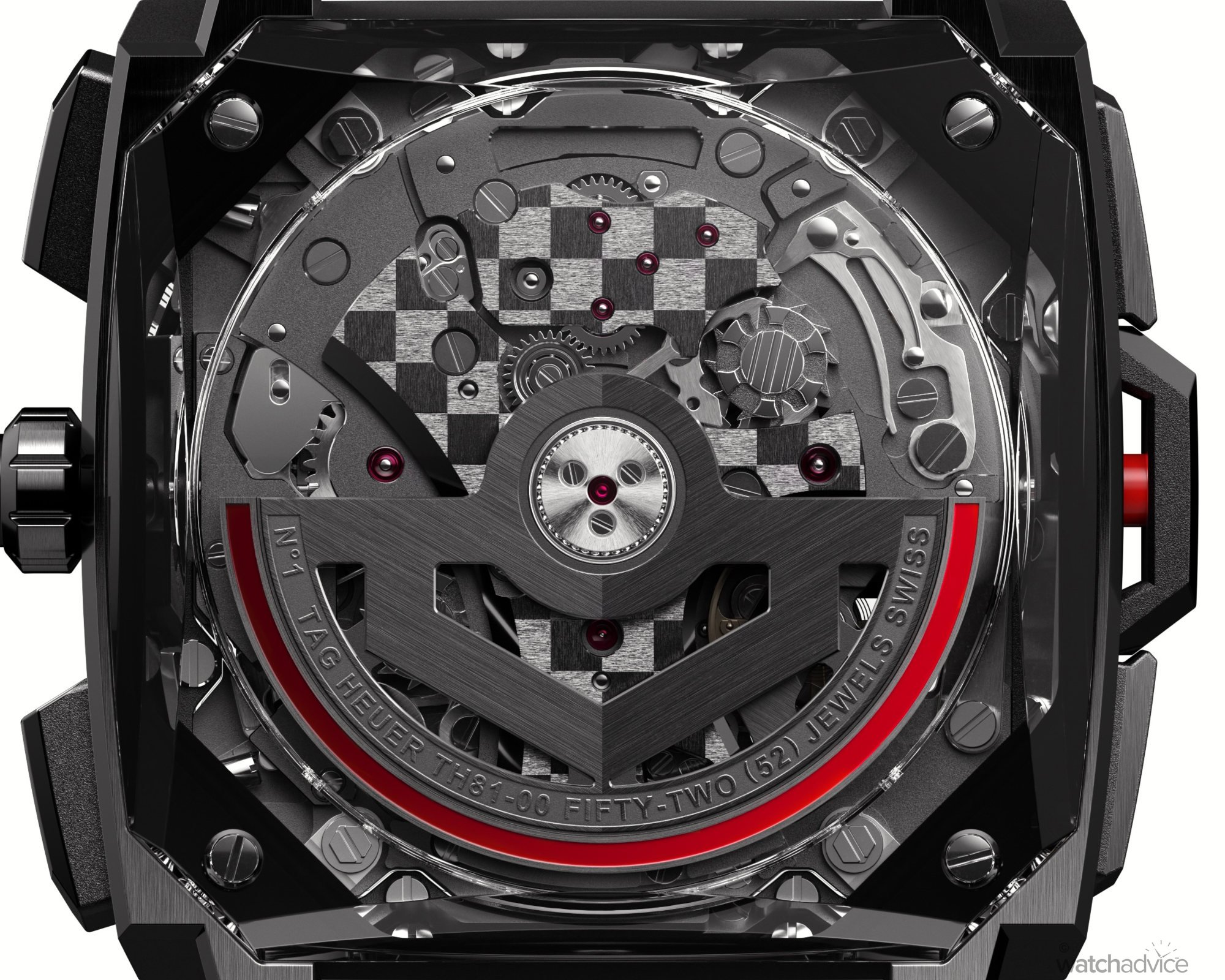
As you talk to Carole more about the movement in this specific piece, and the craftsmanship that TAG Heuer has put into it, you understand the difficulties and time it takes to produce each piece, and of course, the associated price. The other thing the Monaco Rattrapante does is, it signals the re-birth of TAG Heuer’s high watchmaking capabilities. This in itself is a signal that it is now taking its movements a lot more seriously, and the watch community should as well. But, how does this new era translate into the rest of TAG Heuer’s collections, the watches that you and I would buy from a boutique?
“So we are working with two themes here. One is quality and performance, like, accuracy, and power reserves, the other is durability. So what we want to tackle is to have a five-year warranty for all the in-house movements but beyond the five-year warranty, we also want to tackle having ten years between services. So, more quality, more durability is the vision for us at the moment.”
This, however, takes time. You hear armchair commentators say things like, “How hard is it to make your own movements?” or “Shouldn’t all their movements be COSC certified?” Alas, it’s not that easy. If it were, all brands would do it all. It’s time-consuming and expensive. You also have to tackle each calibre on its own, and little by little, a brand like TAG Heuer will slowly change its collection.
“We can’t switch all the movements on the watches like that, unfortunately, we do that collection by collection, and movement by movement. As I said the vision is better performance and with that, better accuracy. What we see now is what I call it new normal in luxury Swiss watches. The COSC is the least of what we have to achieve in terms of accuracy, so we will have more and more certified movements, and even if they are not certified, we have the same level of accuracy, that’s our target.”

This statement here signals that TAG Heuer has plans to increase their movement reliability across the board. Does this mean that all new calibres will be COSC-certified? Not all, potentially due to the cost of getting each movement certified by COSC, but it seems the goal would be to have their major in-house movements COSC over time, and those not certified, manufactured and adjusted to the same level of accuracy as those that are. And this brings us to our next question about new complications. TAG Heuer has just produced the most complicated chronograph function in the Rattrapante, so why not branch out to other more complicated movements, like a perpetual calendar?
“Why not? There was never a perpetual calendar function inside TAG Heuer before, never. A long time ago we had a full calendar, I should say an annual calendar – day, date, months and moon, but not perpetual. So, this is not, I would say, the DNA of TAG Heuer but why not?”
The way Carole talks, you can tell she is always thinking, always looking at what the next big thing is for TAG Heuer. She even tells us that she has her own matchmakers desk in her office at TAG Heuer’s HQ in La Chaux-de-Fonds where she is always tinkering with movements, experimenting with different ways of putting things together and seeing how she can make calibres better, or come up with new ones. It’s good to hear that she’s hands on in this way, and not just a figurehead or manager of a division. As I said previously, watchmaking is in her blood! So that leads us to ask, what is next for TAG Heuer in this new chapter?
“What do you expect? (I don’t know the answer to this, and we both laugh at that). As I said, this is the first chapter of TAG Heuer’s return to Haute Hologerie. So you can imagine that next year we have the second chapter, for example, and we continue to tackle quality and reliability, so we can keep evolving”
And there’s a hint right there for what is next. TAG Heuer’s dipped its toe back into the world of high complications, and it seems that this has sparked something in both Carole and the brand. They are already producing some great Tourbillon pieces, which Carole mentions is her favourite complication in a watch as it gives a bit of soul to the heartbeat of it. Our gut feeling is we’ll see a few more tourbillons released next year, and possibly at Watches & Wonders 2025, some sort of a showstopper, just like the Monaco Rattrapante was this year. And we’re writing this, LVMH Watch Week 2025, which will be held in Los Angeles is only about 4 weeks away. So as we end this year, we’re already looking at the new year kicking off for TAG Heuer in what is sure to be another forward step in the evolution of this new era for TAG Heuer.






